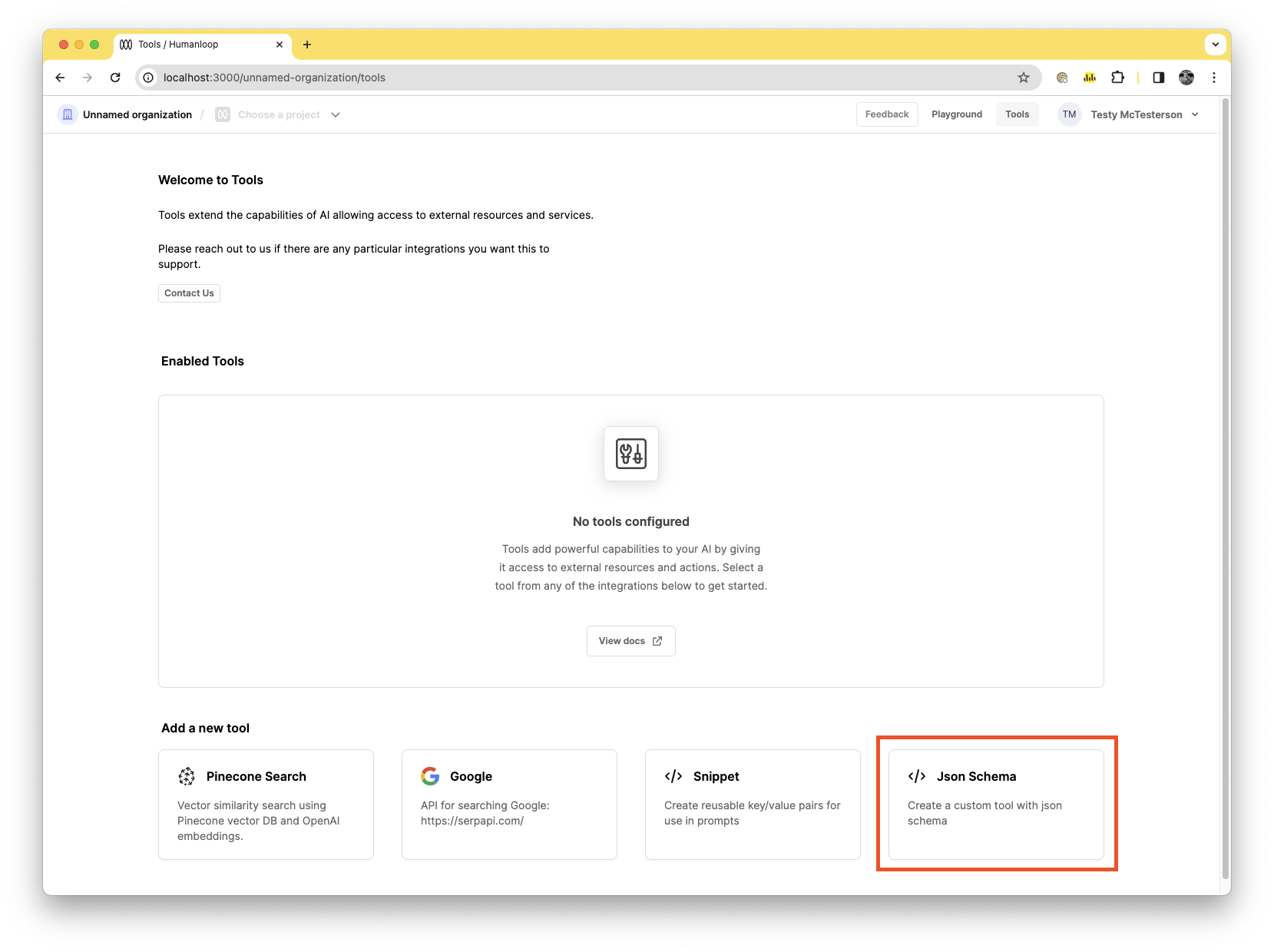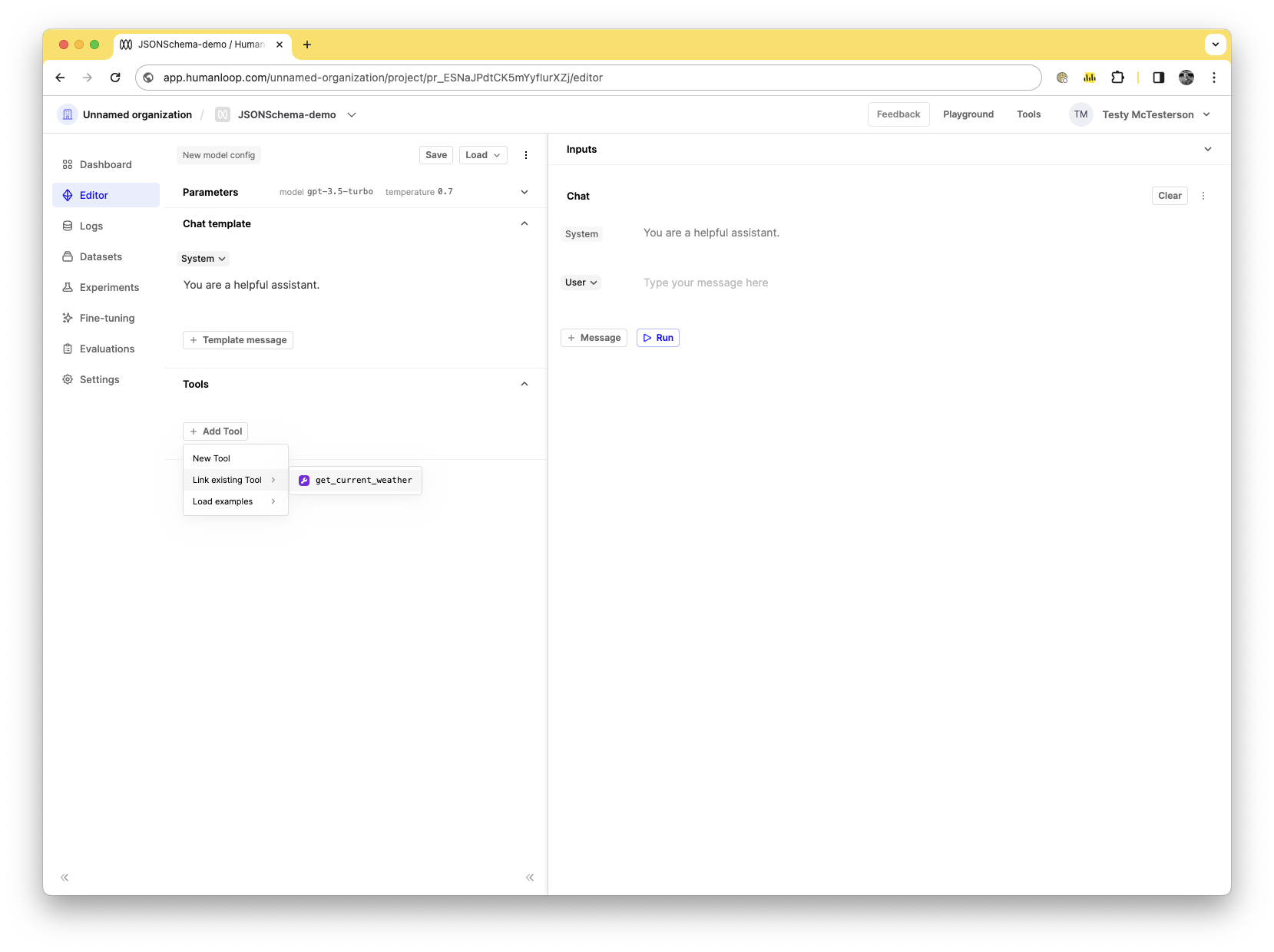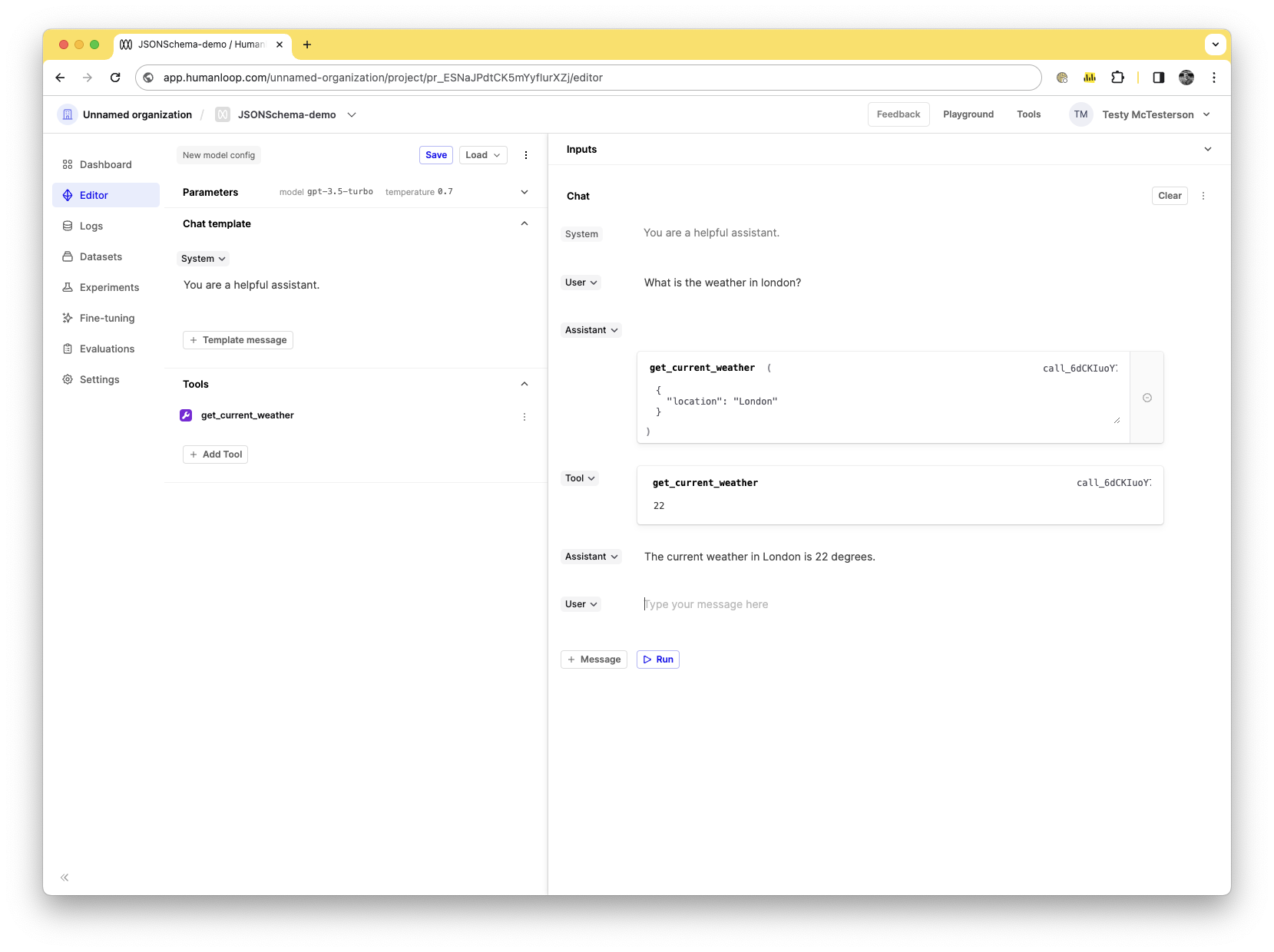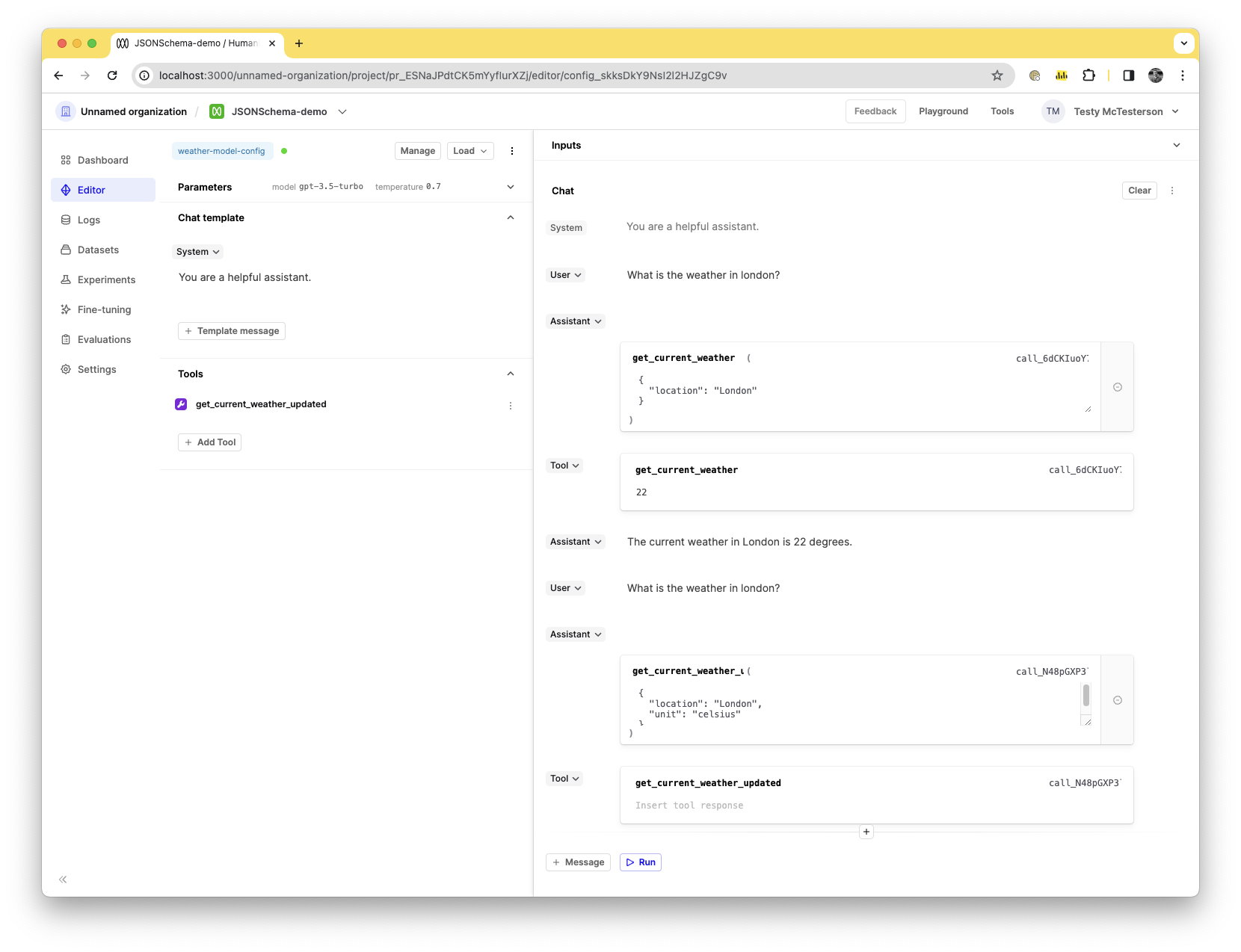Link a JSON Schema tool
It's possible to manage tool definitions globally for your organization and re-use them across multiple projects by linking them to your model configs. You can achieve this tool re-use by first defining an instance of a JSON Schema tool in your global Tools tab. Here you can define a tool once, such as get_current_weather(location: string, unit: 'celsius' | 'fahrenheit'), and then link that to as many model configs as you need within the Editor as shown below.
Importantly, updates to the get_current_weather JSON Schema tool defined here will then propagate automatically to all the model configs you've linked it to, without having to publish new versions of the prompt.
Creating and linking a JSON Schema Tool
Prerequisites
- A Humanloop account - you can create one by going to our sign up page.
- Be on a paid plan - your organization has been upgraded from the Free tier.
- You already have a project created - if not, please pause and first follow our project creation guides.
Paid feature
The Snippet tool is not available for the Free tier. Please contact us if you wish to learn more about our Enterprise plan
To create a JSON Schema tool that can be reusable across your organization, follow the following steps:
- Navigate to the tools tab in your organisation and select the Json Schema tool card.

- With the dialog open, define your tool with
name,description, andparametersvalues. Our guide for using OpenAI Function Calling in the playground can be a useful reference in this case. We can use theget_current_weatherschema in this case. Paste the following into the dialog:
{
"name": "get_current_weather",
"description": "Get the current weather in a given location",
"parameters": {
"type": "object",
"properties": {
"location": {
"type": "string",
"name": "Location",
"description": "The city and state, e.g. San Francisco, CA"
},
"unit": {
"type": "string",
"name": "Unit",
"enum": [
"celsius",
"fahrenheit"
]
}
},
"required": [
"location"
]
}
}
- Press the Create button.
- Navigate to the Editor of your previously created project. And make sure you are using a supported model, such as
gpt-3.5-turbo.
Models supporting OpenAI Function calling
The current OpenAI list of supported models is:
gpt-4gpt-4-1106-previewgpt-4-0613gpt-3.5-turbogpt-3.5-turbo-1106gpt-3.5-turbo-0613
- In the Tools section of the Editor press the Add Tool button.
- In the dropdown, go to the Link existing tool option. You should see your
get_current_weathertool, click on it to link it to your editor.

- Now that your tool is linked you can start using it as you would normally use an inline tool. In the Chat section, in the User input, enter "What is the weather in london?"
- Press the Run button.
- You should see the Assistant respond with the tool response and a new Tool field inserted to allow you to insert an answer. In this case, put in
22into the tool response and press Run.

- The model will respond with
The current weather in London is 22 degrees. - You've linked a tool to your model config, now let's save it. Press the Save button and name your model config
weather-model-config. - Now that's we've linked your
get_current_weathertool to your model config, let's try updating the base tool and see how it propagates the changes down into your savedweather-model-configconfig. Navigate back to the organization Tools section by clicking the Tools button in the top right of the nav bar. - Click the menu dropdown button of the
get_current_weathertool and press Edit. - Let's update both the name, as well as the required fields. For the name, update it to
get_current_weather_updatedand for the required fields, addunitas a required field. The should look like this now:
{
"name": "get_current_weather_updated",
"description": "Get the current weather in a given location",
"parameters": {
"type": "object",
"properties": {
"location": {
"type": "string",
"name": "Location",
"description": "The city and state, e.g. San Francisco, CA"
},
"unit": {
"type": "string",
"name": "Unit",
"enum": [
"celsius",
"fahrenheit"
]
}
},
"required": [
"location",
"unit"
]
}
}
- Press the Save button, then the following Continue button to confirm.
- Your tool is now updated. Navigate back to your previous project, and open the editor. You should see the
weather-model-configloaded as the active config. You should also be able to see the name of your previously linked tool in the Tools section now saysget_current_weather_updated. - In the Chat section enter in again,
What is the weather in london?, and press Run again. - You should see the updated tool response, and how it now contains the
unitfield.

Linked JSON Schema tool changes propogate to saved model configs
When updating your organization-level JSON Schema tools, remember that the change will affect all the places you're previously linked the tool. Be careful when making updates to not inadvertently change something you didn't intend.
Updated 4 months ago
Explore our other tools such as the Snippet or Pinecone Search tool
